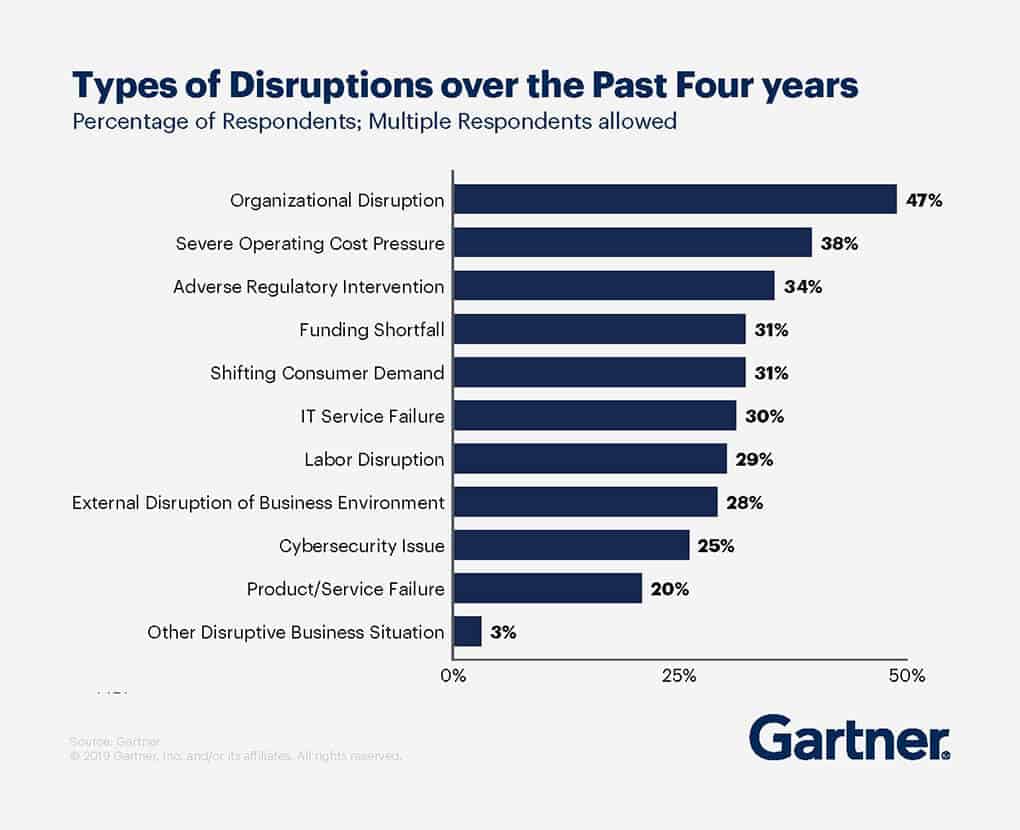Disruption has been synonymous with digital transformation. But beyond business-led disruptions there are other forms of disruptions that continue to impact businesses and the people who work for them. COVID-19 is just one more disruption in a string that continues.

As many companies are experiencing significant declines in revenue over the last several weeks, organizations are implementing a first wave of cost-saving initiatives, such as reducing employee work hours, reducing head count, freezing hiring and/or promotions and more.
A Gartner survey of 160 HR leaders showed that 49% of respondents are implementing company-wide new hiring freezes, and 41% are focused on making better use of technology.
HR leaders have signed-off cost-cutting measures that aim at reducing costs both in the function as well as across the enterprise.

“While HR leaders are being cautious about initializing cost-cutting measures, they are preparing for the possibility of needing to take stronger actions to manage costs,” said Matthias Graf, senior director analyst in the Gartner HR practice.
He added that it is critical for HR to take a strategic view as the decisions that are made now will determine how well organizations can sustain performance during this crisis and emerge in a position of strength.
Cost-saving measures carry inherent risks, however. HR leaders are essential to determining the possible near- and long-term negative impacts on employer brand and employee engagement.
The Gartner survey showed that HR leaders are initializing two main cost-cutting measures both in their function and across the enterprise:
- Within the HR function, HR leaders are focusing their current efforts on making more effective use of technology as well as reprioritizing and downsizing HR services and processes.
- HR leaders’ workforce-related cost efforts include implementing hiring freezes, while mostly holding back for now on driving, larger-scale cost-cutting measures.
Managing HR-related spend
The Gartner survey showed that 27% of HR leaders are reprioritizing and downsizing HR services and processes and 12% are stopping or limiting consultant spend. These efforts are aimed at driving efficiency and effectiveness in service delivery, instead of driving larger-scale cost cuts.
HR leaders are currently refraining from downsizing their function, although this might change amid the growing economic uncertainty.
Manage workforce-related spend
Twenty-seven percent of respondents are not planning any workforce-related cost reduction efforts right now. Organizations are still holding back on larger-scale cost-cutting measures and are instead working to avoid adding new costs to the company payroll.
Companies are also preparing for a second wave of cost-cutting initiatives and are starting to identify potential employee groups for temporary or permanent downsizing activities, such as furloughs or layoffs.
Optimising HR costs
As companies gear up for large-scale cost-cutting measures, they are struggling to identify the most effective means of doing so. When it comes to optimising costs in HR, 42% of the HR leaders polled reveal that they are struggling to move beyond the cost savings they have already achieved. More than one-quarter of respondents stated that they find it hard to respond to ad hoc cost-cutting pressure.
Cost optimisation is an on-going exercise over the last decade. Already lean, these organizations are hard-pressed to find additional savings opportunities.
Therefore, organizations are focusing cost optimisation efforts on service reprioritization and design by limiting service offerings or reducing the service level agreements (SLAs) for certain offerings.
“To achieve immediate savings on spend, companies should look into reprioritizing current and planned projects. Organizations can also think about making staff available for other functions or projects across other business units,” concluded Graf.





